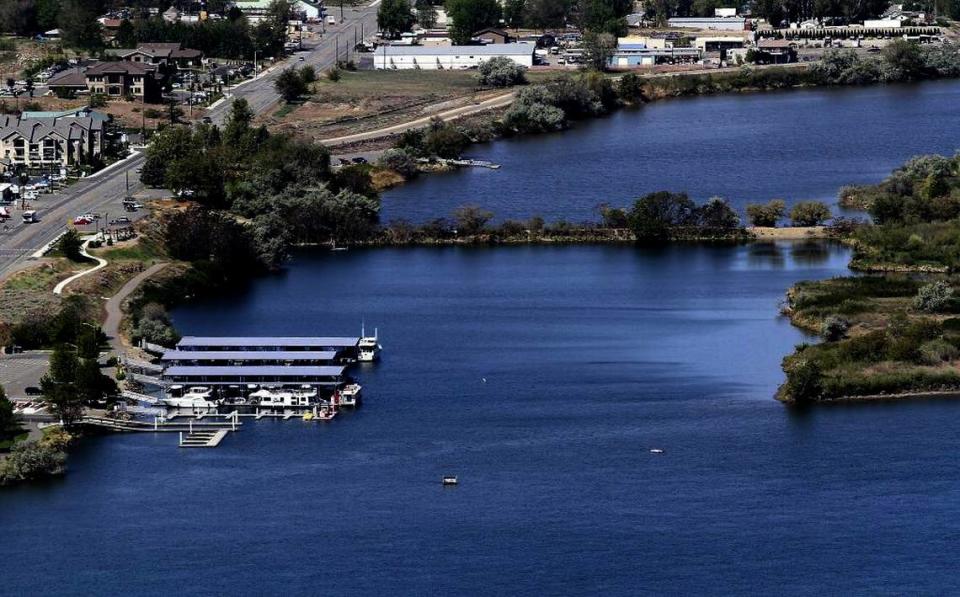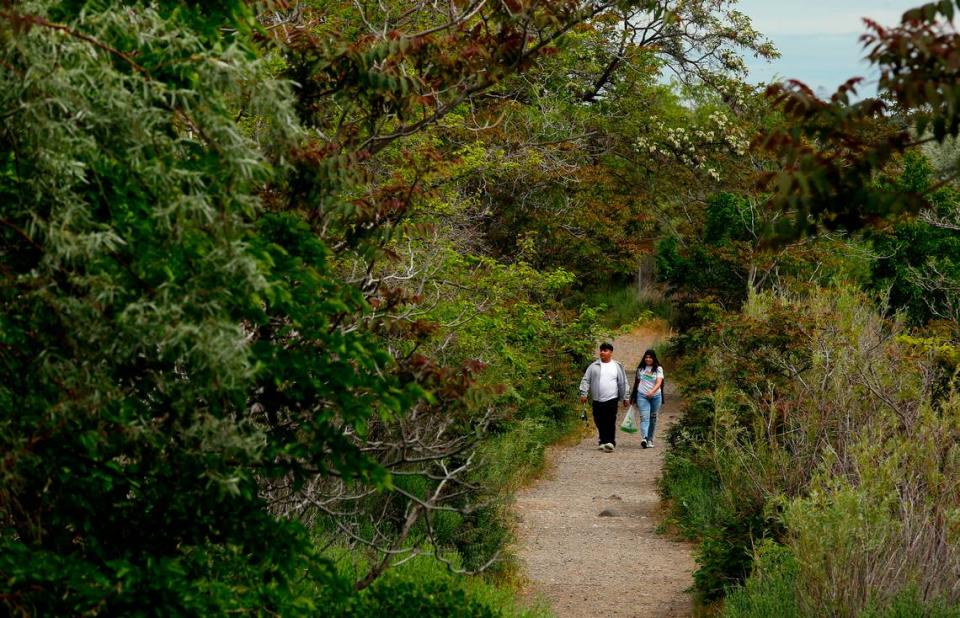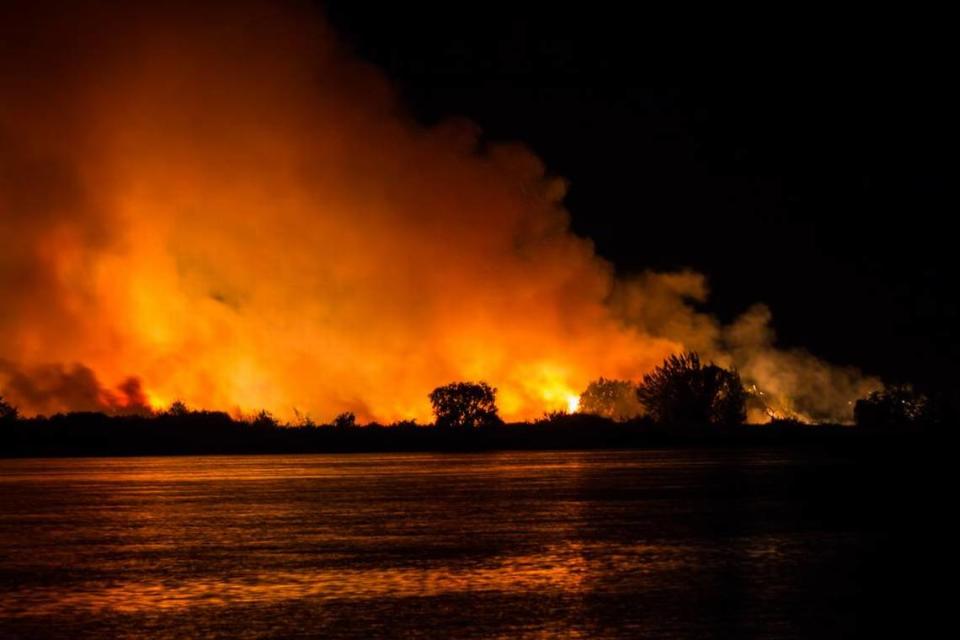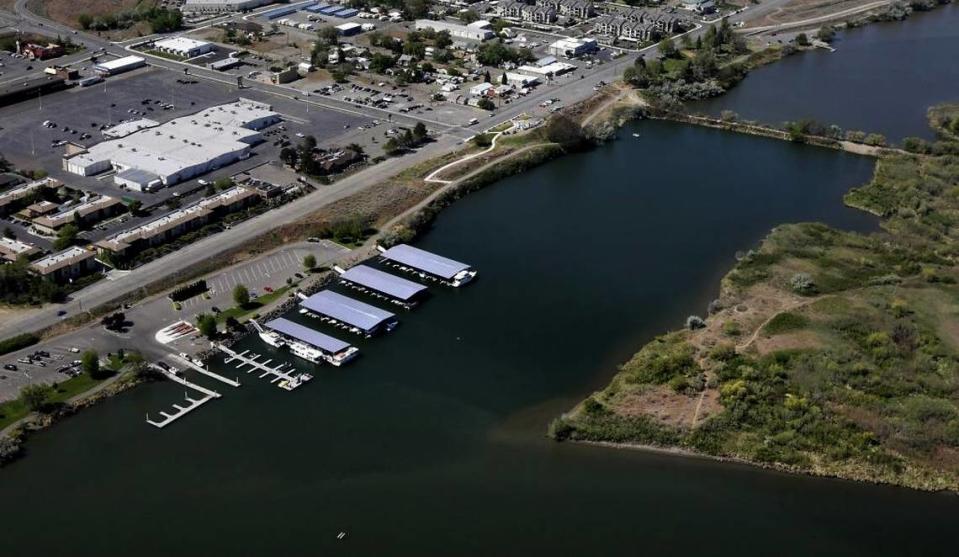City of Richland blasts feds for plan to remove Bateman Island access
A proposed federal plan to take out the causeway that allows people to walk onto Bateman Island in Richland has not taken a realistic look at the consequences or the cost of the project, says the city of Richland.
The city sent a letter with its concerns to the U.S. Army Corps of Engineers on Monday, and it was “pretty negative,” warned Assistant City Manager Joe Schiessl, at a city meeting just before the letter was sent.
The Corps has not done an adequate study of the impacts of taking out the causeway that links the shoreline of the Columbia River in Richland to the south side of the island, he said.
The federal government is proposing not replacing the causeway that provides hikers, birdwatchers anglers and dog walkers access to the island as the Corps considers taking it out to improve conditions for salmon.
But recreational access is not the city’s only concern with the Corps’ proposed plan.
A draft study released by the Corp does not adequately address issues important to the Tri-Cities, including public safety, river navigation, the movement downstream of sediment, drinking water safety, and a downriver marina and dock, according to the city.
And the Corps’ cost estimates are low by a factor of 10, Schiessl estimated.

“We think the project needs another zero on it in terms of money,” he said. “The current budget is $10 million. Based on everything that needs to be done, we think it’s a $100-million project.”
Eighty years of agricultural chemicals are in the sediment behind the causeway, he said.
There are no plans now to remove the sediment before removing the causeway and it will all go downstream.
“It will be a water quality impact to a significant degree,” Schiessl said.
Six miles downstream are the municipal water intakes for 100,000 residents of Kennewick and Pasco, he said.
“We don’t think the Corps’ budget of $10 million is enough to even deal with sediment,” he said.
Slack water harms salmon
The city is supportive of the goal of removing the causeway to improve water conditions in the Yakima Delta, he said, but the Corps needs to address adverse impacts on Tri-Cities residents.
“A bridge to Bateman Island would enable the city to maintain an acceptable level of public safety” and address other consequences of taking out the causeway,” the city said in a letter to the Corps.
The earthen causeway from the Richland Wye Park to Bateman Island is 500 feet long and 40 feet wide, blocking river flow.
Issues with water flow at the Yakima Delta were compounded when construction downstream on the McNary Dam was completed in 1957. The causeway was finished in 1940.
The dam turned the southern side of the Yakima River delta into a backwater with ideal habitat for predatory fish and invasive plants, according to the Corps’ “Yakima River Delta Ecosystem Restoration Draft Feasibility Report With Integrated Environmental Assessment.”
Summer water temperatures on the south and west side of Bateman Island now can be as high as 86 degrees for sustained periods.
The warm water creates ideal conditions for non-native fish, such as smallmouth bass, that prey with voracious appetites on young salmon migrating to the ocean in the spring.
It also may prevent salmon from entering the warmer Yakima River to spawn.
Richland safety concern
Among Richland’s safety concerns is fighting fires on the island, which is the city’s responsibility.
Fires have started on Bateman Island about every five years.
In 2017, nearly 200 firefighters from 13 agencies were required to put out a 70-acre fire that burned for six days over 70 acres. Cost was about $100,000.

Bateman Island is considered a high risk for fire due to the type and amount of vegetation.
But fighting fires there would be more difficult without the causeway.
Because of the island’s 160-acre size and thick vegetation, assuring that all people were off the island when a fire starts would be difficult, according to city correspondence to the Corps. People could still float or boat to the island if the causeway is removed.
The fire would need to be fought as if there was a risk to human life rather than letting it burn.
Tribes also are concerned that if fires are allowed to burn vegetation to bare ground, their cultural resources could be exposed.
Without the causeway, fighting the fire would be limited to boats.
But a fire boat would need to spray a distance of 1,700 feet from where the river is deep enough for it to navigate to reach the center of the island, according to Richland.

The city pointed out to the Corps that the Port of New York recently commissioned a fire boat at a cost of $27 million that still could spray only up to 400 feet.
Corps planners have raised the possibility of a landing craft that could transport firefighting equipment. But that would require loading docks on the shorelines of Bateman Island and Columbia River, according to the city.
Another possibility would be managing vegetation to reduce fire risk.
But the city is not prepared for a project of that scope, which would require replacing non-native vegetation with fire-safe native vegetation across the island.
Corps officials also have proposed aerial suppression. But the city said that no planes were available in 2017 to fight the Bateman Island fire from the air.
Richland: Corps report lacking
The Corps draft report did not take an adequate look at the affect on recreation of removing the causeway, the city said.
The island has two miles of trails for walking and hiking, but the Corps has not done a count of pedestrians and bicyclists who use the causeway to reach the island.

The draft report acknowledged that fewer people would use the island if it has to be reached by boat or other flotation device, but said the impact to area recreation would not be significant.
However, a Corps official has told the city that Bateman Island was intended to be a public recreation area to help offset recreation losses due to the construction of McNary Dam downstream on the Columbia, according to the city.
The loss of the causeway also could make it more attractive for unallowed uses such as partying, homeless encampments and campfires as it would become more difficult for law enforcement to reach the island.
Richland would remain responsible for land-based law enforcement on the island, but it does not have a law enforcement boat, the city said.
The city also is concerned about increased river water current flows that could be harmful for the downstream marina and public boat launch.
Removing the causeway could result in loss of those amenities, the city said.
“All indications are that the .... plan would materially degrade recreational access to the Yakima Delta,” according to the city.
The Corps needs to address those impacts and investigate the nature and the extent of the contamination of the sediments that would be released to flow down the river, said the city.

